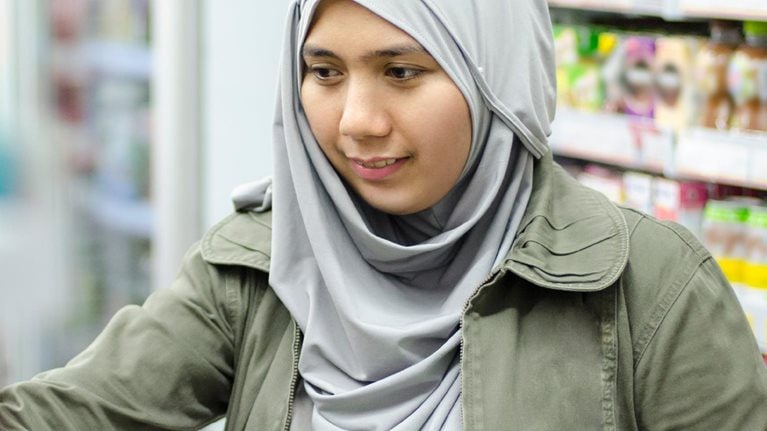Economic systems around the world have ground to a virtual halt as trade flows and tourism have evaporated because of the COVID-19 crisis. In June, International Monetary Fund predicted that the global economy would shrink by 4.9 percent in 2020, warning of especially harsh conditions for low-income households.1 Indonesia had already cut its 2020 GDP growth outlook to 2.3 percent, from 5.3 percent, by April.2
Since then, the toll of the COVID-19 pandemic in Indonesia has grown, with some 145,000 COVID-19 cases and more than 6,000 related deaths being reported (Exhibit 1).3 The country’s immediate priority is undoubtedly to mitigate and contain the impact of the pandemic on a number of fronts—for example, by encouraging safe behaviors, intervening immediately to mitigate healthcare-capacity constraints, and pushing hard on COVID-19 testing. Especially with the prospect of a second wave of infections, such efforts must continue in both the public and private sectors.

Even amid such hardship, however, public- and private-sector leaders can prepare for the postcrisis environment by identifying the changes necessary for the country to emerge stronger after the pandemic—to protect both lives and livelihoods. Looking ahead, government and corporate leaders can begin to formulate longer-term strategies that will help Indonesia move forward quickly with building a modern economy. In that context, it’s essential to understand how the country and the world have evolved and to craft strategies that recognize those changes.
Leaving the crisis stronger
While there have been many attempts to describe the next normal after the COVID-19 crisis, its ultimate shape will be the result of many factors that remain unknown today. Such factors include the appearance, duration, and severity of any subsequent wave of COVID-19 cases; time needed to develop and distribute a COVID-19 vaccine; depth of economic disruption; and ability to recover. Despite those uncertainties, however, now is the time for Indonesia to consider the various trends that will define the next normal (Exhibit 2):
- Healthcare. Changes to the country’s healthcare system and the need to prepare for possible future pandemics will affect the system’s structure, supply chains, and pricing regulations, among other things.
- Government and regulation. There are likely to be calls for more stringent, cross-sector regulations that provide detailed protocols for the safe operation of different types of businesses, with specific implications for the various stakeholders.
- Technology and innovation. Lockdowns have channeled many people online for shopping, learning, entertainment, and working, accelerating the shift to digital services. Simultaneously, companies are pushing ahead with internal digitization for staff, customers, and suppliers (for instance, enhancing supply-chain visibility, offering digital learning experiences, and providing new channels to customers).
- Energy and environment. Working from home, reducing long-distance travel, and other lockdown habits could lead to a permanent shift toward behaviors that are better for the environment.
- Supply chain. Companies and governments will seek to address supply-chain flaws revealed by the crisis (for example, phasing out just-in-time strategies; encouraging domestic sources for strategic goods, such as food and medicine; and generally accelerating the digitization of supply chains).
- Work habits. New work habits, such as use of videoconferencing, remote-working solutions, and greater employee flexibility, could give rise to a demand for in-home services—and also encourage “deurbanization.”
- Society and consumers. Society’s responses to the pandemic will be shaped according to demographics. For instance, at-risk populations are likely to be more conscious of health concerns; such changes will likely be far more pronounced among baby boomers than Gen Xers or millennials.
- Social contracts. With the development in some markets of tracking apps designed to inhibit the spread of COVID-19, people may be more willing to waive some privacy concerns in exchange for greater health, safety, and comfort guarantees.

With those themes in mind, we have looked at how Indonesia can reimagine and reform itself after the COVID-19 crisis by considering the following opportunities: increasing national resilience, accelerating the economic transition, rebuilding the tourist sector, and enabling genuine change (Exhibit 3).

National resilience
As Indonesia initiates efforts to increase its national resilience to any future health crisis, two crucial focal points immediately become apparent. The first is domestic manufacturing of healthcare devices and products, and the second is agricultural reform.
A possible measure with significant potential for Indonesia would be to encourage the development of the country’s medical-device-manufacturing industry. The medical-device market in Indonesia in recent years has been worth approximately $1 billion annually and is projected to grow to $1.5 billion by 2025.4 A staggering amount (92 percent) of those devices, mostly medium- and high-tech devices, were imported. And while Indonesia exported some basic devices, such as surgical gloves, disposable gowns, and hospital beds, it has relied on imports for others, such as specialized scissors.
Expanding that sector for domestic and foreign customers would increase Indonesia’s resilience and strengthen its economic base. Global demand for medical devices is expected to grow as countries build their stockpiles. Indonesia’s need to import around 17 million face masks during the COVID-19 crisis illustrates the domestic urgency.5 Existing manufacturing infrastructure, such as in the textile industry, could be shifted to meet that demand.
The insurance sector can also be improved to enhance the country’s resilience. For instance, boosting the protection offered to vulnerable populations, creating a national pandemic-insurance pool, and introducing more Indonesians to the benefits of insurance coverage—especially fixed-fee microinsurance offerings—could mitigate strains on the healthcare system during a crisis.
Food security in Indonesia when a global crisis severs international supply lines can be enhanced through reforms that increase domestic rural productivity. In 2018, for example, Indonesia imported around five million tons of sugar and more than two million metric tons each of soybeans and rice.6 What’s more, the country ranked 62nd out of 113 in the Economist Intelligence Unit’s 2019 Global Food Security Index.7 An area for consideration is that demand will increase in many food categories, such as meats, dairy products, and wheat, as incomes rise. Changes to fortify domestic supply lines that serve thousands of islands across the archipelago should also be considered.
Indonesia should identify ways to address its fundamental agricultural challenges. The agricultural system is fragmented, with most farmers owning less than half a hectare of land, preventing economies of scale and the use of modern equipment and practices. Also, lack of sufficient infrastructure hinders the distribution network, leading to spoilage and shortages.
Digital tools can be used to help fix those challenges. In China, e-commerce sites have launched programs to help farmers sell produce online during the pandemic. Such platforms give farmers more confidence and certainty in their markets. One such site, Pinduoduo, reported more than one billion orders of farm products from rural merchants in the first quarter of 2020, a 184 percent year-on-year increase.8 E-commerce platforms can give farmers more confidence and certainty in their markets. Introducing a digital food-balance sheet that tracks production, demand, reserves, and trade can create greater certainty for producers, consumers, and the government. By using that method and switching from manual accounting, Kenya was able to generate greater efficiencies quickly in areas such as food-reserve purchases and data collection.
Economic transition
Indonesia can also track global changes sparked by the COVID-19 pandemic and adjust economic strategies to seize opportunities. For example, even before the pandemic, between 2014 and 2016, McKinsey research suggest that China’s share of global exports in labor-intensive manufacturing fell around three percentage points, although it remained dominant. Indonesia has a chance to capture a greater portion of those trade flows. It will need to look at sectors in which the country is fundamentally competitive, with domestic demand as a foundation, while ensuring that there are wide-ranging reforms to the investment framework.
The country’s manufacturers could also compete more effectively in the global economy if they digitized more quickly. Modern methods in manufacturing linked to advanced data analysis, automation, machine learning, and other new technologies—a group known as Industry 4.0—are cutting costs and creating efficiencies in plants around the world. A digital capability center in Indonesia would help the country’s manufacturers accelerate through the transition.
Consumer changes also provide fertile ground for transforming Indonesia’s economy. Our survey in March 2020 showed that, as a result of the pandemic, Indonesians have a sharply increased preference for locally sourced products across a range of categories. For example, 53 percent of the respondents reported a greater preference for local fruits, and more than 40 percent expressed an increased preference for local products across lines including healthcare, personal care, paper goods, and packaged food.
The survey also showed that the health crisis has made Indonesians more conscious of product safety and the environment, as well as prevention practices exercised in stores. More than 70 percent of respondents, for instance, said they cared more about product safety and environmentally friendly manufacturing processes and were more willing to research those factors in the wake of the pandemic. Companies that understand such shifts can use the insights to gain market share.
The entertainment industry can also benefit from the consumer habits acquired during lockdown. In our survey, 28 percent of respondents said they streamed more online content than they did before lockdown, and 68 percent said they would continue to watch streamed content once the crisis had passed. That offers a strong incentive for Indonesian producers and distributors to supply more local content to meet viewers’ increased streaming appetite.
Tourist sector
As the world slowly reopens, Indonesia will be competing with other destinations around the world for the attention of fewer travelers. In mid-April, the government estimated that the country will lose more than $10 billion in tourism revenues in 2020, as foreign tourist arrivals in the country are seen to be falling by around a third compared with 2019 levels.9
A first step toward mitigating that downturn would be to develop domestic tourism to compensate for some of the loss in international revenues. Evidence from China suggests that the slowdown in short-haul travel had begun easing by mid-February, while long-distance travel continued to suffer. That trend is likely to be repeated in many other markets, pushed largely by travelers younger than 30, who may feel less at risk. To capitalize on that, Indonesia could begin marketing its lesser-known tourist attractions to a domestic audience, once it’s safe to travel. Such an initiative could encourage Indonesians to take short trips within the country to discover and explore such sites as they try to shake off lockdown fatigue.
Indonesia could also use the unintended lull in international travel to improve its tourism infrastructure, such as airports, and standards within the hospitality industry. Taking advantage of the disruption to accelerate improvements could help the country reach its goal of receiving 73.6 million foreign tourists annually by 2045, up from 15.8 million in 2018.10
A problem with waste, particularly plastic trash, linked to the growth in tourism in Indonesia threatens to tarnish the country’s attractiveness for foreign visitors. Bali, which witnessed a sixfold increase in tourism between 1996 and 2018, suffers particularly, with domestic and foreign tourists generating 34 times more waste than residents, per a National Geographic estimate.11 Initiatives to clean up the waste and increase recycling that were begun before the pandemic could be accelerated, giving foreign arrivals a better experience once traffic increases again.
Genuine change
In addressing Indonesia’s mid- and long-term economic aspirations—even during a time of dramatic disruption—the country can’t lose sight of the basic measures that will enable sustainable beneficial change in the country’s economy. Even before the pandemic, challenges to the country’s economic development had been identified, and leaders can continue efforts to address these.
One of the most important efforts is to develop appropriate talent for a modern economy. A McKinsey study has shown that modern technology, including automation, could create more jobs in Indonesia than are lost between 2014 and 2030. The estimated net gain is between nine million and 24 million jobs (Exhibit 4).

Many of the new jobs will require new skills, and we have estimated that the country will face a shortage of around nine million workers with much-needed digital skills between 2015 and 2030. Indonesia can build from the online-learning efforts and habits developed during the pandemic to teach those new capabilities more broadly and more quickly. More than three-quarters of the respondents in our Indonesia survey said they would continue or increase their online learning activities once the crisis subsides. Remote learning can also help correct a talent imbalance, with much of the country’s best talent centered in Jakarta, creating shortages elsewhere.
Productivity gaps can also be narrowed as Indonesia’s leaders work to erect a modern economy. While the country has gradually improved labor productivity over the past decade, levels remain lower than those in peer countries in Southeast Asia, including Malaysia, Singapore, and Thailand.
Infrastructure development will remain a concern, even as the pandemic shifts some of the priorities. Pressure could rise for better logistics to support home deliveries and improved digital infrastructure in general. Connectivity—physical or virtual—will be especially important for the country’s more remote islands. The pandemic has also brought into clearer focus the need for improved sanitation and access to clean water, as well as other improvements in conditions, such as a reduction in overcrowded living spaces and multiple access points to homes. Infrastructure development is also a way to increase employment, especially at the bottom of the income pyramid, so it’s a route to stimulating spending in a productive fashion.
When a crisis of any kind strikes, taking attention away from immediate concerns is difficult. Looking toward the future, however, won’t dull the efforts needed to control and minimize the personal and societal harm caused by the COVID-19 crisis. Instead, it demonstrates optimism in a future characterized by the next normal and a commitment to persevere, even during hard times, with reimagining a new Indonesian economy.


